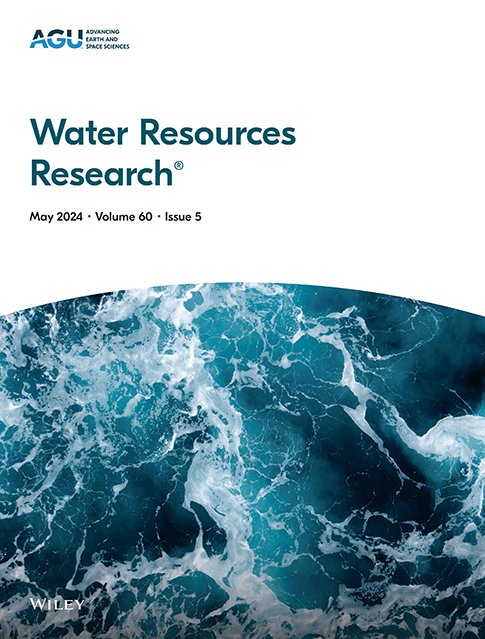Impact of Surface Cover Types and Coverage on Hydraulic Parameters of Overland Flow
IF 5
1区 地球科学
Q2 ENVIRONMENTAL SCIENCES
引用次数: 0
Abstract
Surface cover influences the hydraulic parameters of overland flow, subsequently affecting soil erosion. Therefore, exploring the flow dynamic mechanisms under different surface cover types is crucial. A series of flume experiments were conducted to investigate the impact of surface cover on the hydraulic parameters of overland flow. The specific experimental conditions were as follows: one slope gradient (15°) and one flow discharge (1.0 × 10−3 m3 s−1), four cover types (corn residue, rock fragment, sweet potato, and corn stem), and seven coverage percentages ranging from 0% to 70%. The results indicated that the cover of non-submerged state was the most effective at reducing flow velocity, with cover of submerged state being the least effective. Under the four cover conditions, flow velocity, Froude number, flow depth, and shear stress exhibited significant power function relationships with coverage (R2 > 0.91). The relationships between Reynolds number and stream power with coverage were not significant under corn residue and rock fragment cover (P > 0.05), but showed significant power function relationships under sweet potato cover (R2 > 0.88). The cover type alters the form of the cover and the flow submergence degree, leading to the change of hydraulic radius, thereby influencing the hydraulic parameters of overland flow. The findings provide scientific evidence for understanding the flow dynamic mechanisms under surface cover and improving the predictive accuracy of soil erosion process models.地表覆盖类型和覆盖范围对坡面流水力参数的影响
地表覆盖影响坡面水流的水力参数,进而影响土壤侵蚀。因此,探索不同地表覆盖类型下的流动动力学机制至关重要。通过一系列水槽试验研究了地表覆盖度对坡面水流水力参数的影响。具体试验条件为:1个坡度(15°),1个流量(1.0 × 10−3 m3 s−1),4种覆盖类型(玉米渣、岩屑、甘薯、玉米茎),7种覆盖百分比(0% ~ 70%)。结果表明,非淹没状态覆盖层降低流速的效果最好,淹没状态覆盖层降低流速的效果最差。在4种覆盖条件下,流速、弗劳德数、流深和剪应力与覆盖程度呈显著的幂函数关系(R2 >;0.91)。玉米渣和岩屑覆盖下,雷诺数和水流功率与覆盖的关系不显著(P >;0.05),但在甘薯覆盖下呈显著的幂函数关系(R2 >;0.88)。盖板类型改变了盖板的形态和水流淹没程度,导致水力半径的变化,从而影响了坡面水流的水力参数。研究结果为理解地表覆盖下的流动动力学机制,提高土壤侵蚀过程模型的预测精度提供了科学依据。
本文章由计算机程序翻译,如有差异,请以英文原文为准。
求助全文
约1分钟内获得全文
求助全文
来源期刊

Water Resources Research
环境科学-湖沼学
CiteScore
8.80
自引率
13.00%
发文量
599
审稿时长
3.5 months
期刊介绍:
Water Resources Research (WRR) is an interdisciplinary journal that focuses on hydrology and water resources. It publishes original research in the natural and social sciences of water. It emphasizes the role of water in the Earth system, including physical, chemical, biological, and ecological processes in water resources research and management, including social, policy, and public health implications. It encompasses observational, experimental, theoretical, analytical, numerical, and data-driven approaches that advance the science of water and its management. Submissions are evaluated for their novelty, accuracy, significance, and broader implications of the findings.
 求助内容:
求助内容: 应助结果提醒方式:
应助结果提醒方式:


